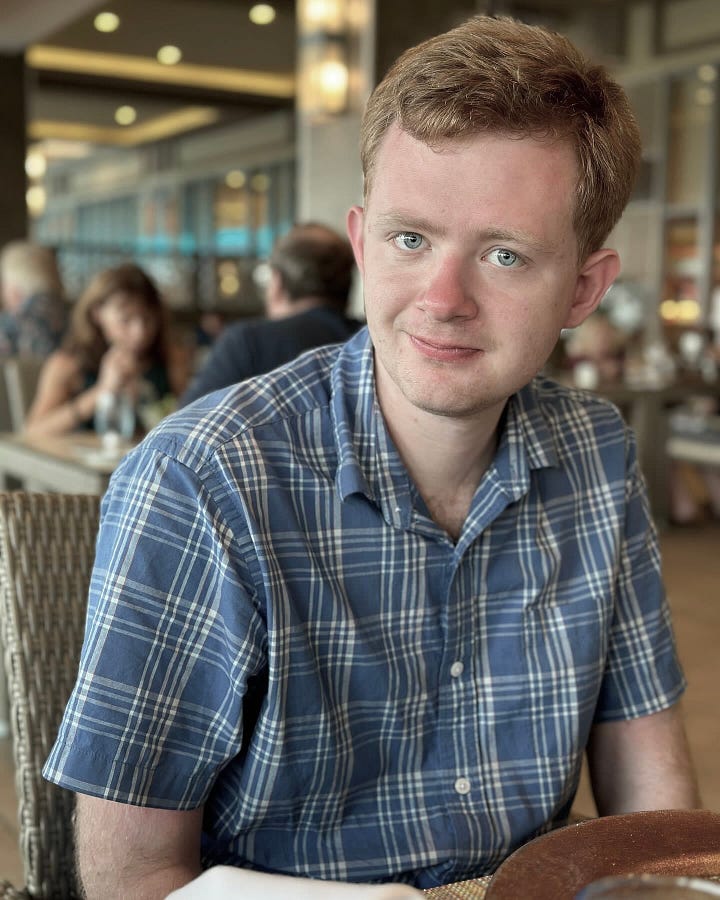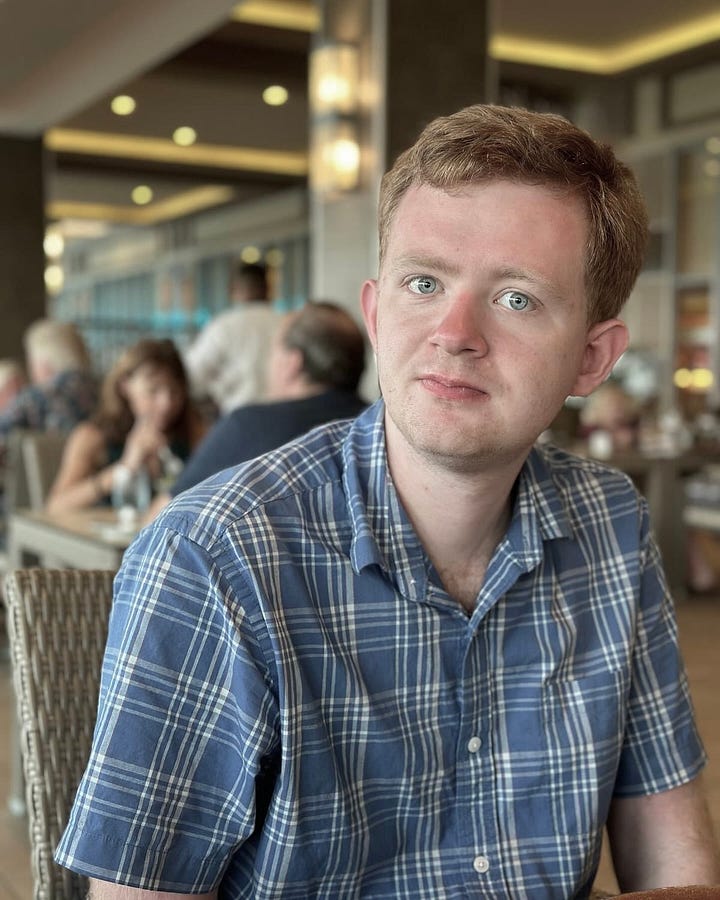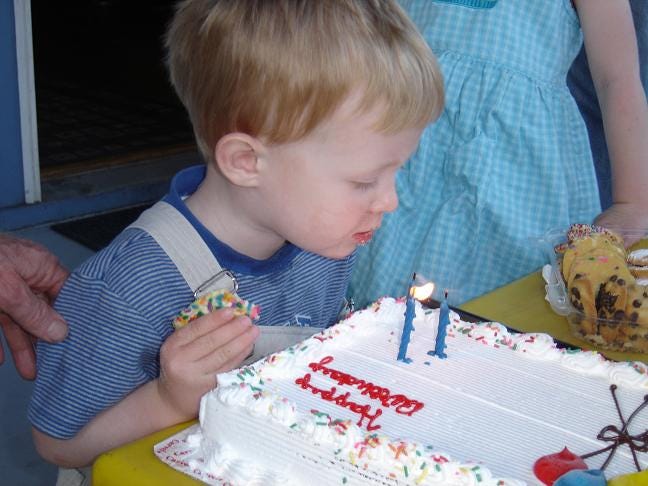It’s growing harder and harder to ignore the rising rates of autism diagnoses in our country.
According to the CDC, 1 in 36 children is currently diagnosed with an autism spectrum disorder (ASD). In some states like mine, the rates are even higher. In Newark alone, 1 in 20 students were identified with autism - a sudden spike that has strained local resources. Autism cases in NJ have spiked 300 percent in the past 16 years. Yet, we haven’t figured out how to help those kids and families yet.
Our schools shove those kids in basement classrooms, until they're old enough to be foisted on the state disability system. The states don’t have enough facilities or staff to run programs for them, so they toss parents some money and run away. Businesses don’t want to employ autistic people, even those with college degrees; that’s why the autism unemployment rate is about 80 percent. Communities don’t know how to fold isolated individuals and families into existed programs at churches and libraries, so bad things happen.
We need to figure out how to manage autism, our squarest peg. It’s going to take creative thinking in education, health care, disability support system, and communities. Good solutions will provide relief for individuals and families, as well as control costs and reduce waste. In addition, smart programs will have spillover benefits for the entire community. To make real changes, we have to change multiple systems and go beyond superficial, click-bait solutions.
The Extent of Autism
Nobody really knows why there are so many young people getting diagnosed with autism. Are doctors better at identifying the problems early on? Are there changes in our mating patterns or environment that are resulting in more autistic babies? Why are there autism clusters in certain areas of the country? NPR recently had an interesting article about identical twins with different kinds of autism with theory about the causes.
As I get older, I find that I’m less interested at seeking origin answers, and more interested in appreciating the present situation, where the tragedy and humor are intermingled.
When Steve and I walk around public places like amusement parks or city streets, we’ll see people walking past us that have the telltale signs of being neurological diverse. Steve will nudge me and say, “tribe member,” because autistic people and their families are all part of the same tribe. We endorse a big tent version of autism, so our tribe includes the physics professor, who can’t make eye contact, as well as the non-verbal boy, who hurts himself. We’re stronger together.
In our tribe, people just get it. We don’t know to explain OCD or speech therapy or the need for schedules. It’s such a relief to talk to other autism parents. When we meet up at cocktail parties: “You’re an autism parent? Us, too!!” Best friends forever.
And our autistic kids and friends are truly funny, kind people. I’m so lucky to have so many autistic folks in our community and in my life. Yet, autism is always with us. Both of our boys have reshaped our lives, but my autistic son’s impact is deeper. Even now that he’s 22, our lives are geared around his therapy schedule and college classes. I organize his social events and manage his disability paperwork. I even monitor my conversations.
Ian loves peace and harmony so much that we have to be careful about political debate around the kitchen table. He can’t distinguish between the tone of voice that one uses in a serious family spat versus the tone used to express strong opinions about the stock market or the Russian-Ukraine war. Strong feelings are worrisome for him, so we’ve learned how to modulate all discussion in our home — not a bad thing, but it’s a little tiresome, too.
Autism is an expensive problem
While we certainly appreciate the autistic folks in our lives, we also have to recognize that it’s still a disability that requires extensive and varied support, which isn’t cheap. Autism has a price tag.
With the growing number of young and young adults with autism, the total cost of supporting these individuals is multiplying exponentially. A recent academic article estimates skyrocketing costs in the near future. In 2020, the social costs of autism were around $223 billion. The researchers estimated that those numbers will be $589 billion/year in 2030, $1.36 trillion/year in 2040, and $5.54 trillion/year by 2060.
Autism is expensive, because the needs are intense, multi-pronged, and treatable.
Autism can be very intense, particular when the kids are young. When my son was three, he couldn’t talk much. He was so frustrated that he screamed for an entire year. Like all the time. Other kids handle their frustration by hitting others and themselves. Autism can be destructive and dangerous. Some children with autism NEVER sleep and try to run out of the house at 3am. Some types of autism requires constant one-on-one attention.
Autism requires multi-pronged support, because there are many different ways that a person can be autistic. Autistic children might need support for sensory differences, physical differences, social skills, speech, anxiety, and behavioral issues. Each one of those problems requires a different type of therapist, who bills the school districts and insurance companies by the hour.
Autism is often joined in the disability bus with other disabilities. ADHD, OCD, Anxiety, Depression are just a few of the other issues that may accompany autism. Ian got epilepsy at age 18, which is very common with autism. Those extra issues require their own kind of supports.
Ironically, autism is expensive, because it is treatable. A kid in a wheel chair will never walk. But a non-verbal five year old who flaps his hand COULD end up at college, given the right treatment, supportive family with deep pockets, and some unknown qualities that aren’t fully understood yet. All the research shows that the most effective treatments are highly time-intensive at young age. ABA therapy for 40 hours per week is standard treatment for toddlers today. Again, that costs money.
For those who reach 21 and still have needs, despite the years of therapy, there are more costs. At that point, the school district no longer has to support the autistic person’s needs, and the state steps into the picture. They have to cover day programs, therapy, housing, and more. Those costs can easily be in the six digits per year.
Beyond the Costs
The costs and the number of autistic people should be reason enough to find a solution to the autism problem, but let me give you a few more:
The average life expectancy for someone with autism is 39 years old. The leading causes of death are epilepsy, suicide, heart disease, and cancer. The suicide rate is influenced by depression and high isolation levels in the autism community.
Parents of children with ASD score higher on levels of stress than other groups of parents.
Chances are that someone you love has been touched by autism. Statistically, everyone’s family tree includes someone with autism. Or, we may have a family member, while not autistic, is still different enough to benefit from a living a nicer, more inclusive society. Autism is no longer other peoples’ problem. It’s your problem, too.
Solutions
So, what can we do? We need to build better programs, which will help autistic people, save money, and support the families. It can be done, once we think about solutions as happening across institutions and go beyond some click-bait solutions.
Schools, who have the lion share of caring for autistic children between age 3 and 21, have to break the special education system for these kids. Those with higher IQs should be in mainstream classrooms with aides and trained teachers. Those with higher needs should be served by county-wide magnet schools. Schools should not deal with autistic children on a case by case issue, depending on a parent’s ability to hire an attorney.
We need to build more inclusive communities with social opportunities, places to work, walkable downtowns, and accessible public transportation. We need to accept and appreciate autistic people in our churches and at the coffee shops. We need to know their names and say hello in the streets.
We need to fully fund the disability support system at the state and federal level, so that homeless shelters aren’t filled with autistic people. We have to reduce redundant paperwork on families, so they won’t have to spend two or three years just getting into the system. We have to provide more qualified and more highly paid people to run disability programs in our country.
Hard Work Pays Off
Last year, I wrote “Autism, The Squarest Peg,” one of my most popular newsletters. At that time, I was just finishing off the paperwork to get my son in the state disability system. I was exhausted from that process and from legal wrangling with the school district to place him in an appropriate transition program. My son was struggling with the side effects of epilepsy medicine, which made him nauseous, tired, and grouchy.
A year later, Ian is weened off the epilepsy medicine and is much healthier. He is finishing off two more community college classes this May, with a total of nine under his belt. This summer, he will attend a five week program at Landmark College in Vermont. It’s a special college for people with autism and other learning difference. This is Ian first time away from home - a huge milestone. In the fall, he’ll finish his IT degree at our local community college.
Nonverbal and screaming in nursery school, Ian’s earning A’s in college classes. We are so proud of him.


LINKS
Not today. This is long enough. I’ll share links in a few days.


Thanks for providing the perspective, Laura. I agree that changes in policies and practices are needed. I hope we can identify measures of increasing independence and competence that will allow us to assess whether any changes that we all (parents, educators, policy makers, etc.) make actually help "move the needle" in beneficial directions. How will we know if what we're doing is working?
Autism is not a problem.
It could be the way society perceives us is at issue.
The compliance systems western civilization rely on, including education, are not designed for us to exist.
The game board was designed by allistics and it is disingenuous to suggest or believe inclusion would ever be a thing (although we can dable in fantasy to hope).
While that may seem harsh, we have sufficient historical evidence and behavioural science to understand why it will not be a thing.
It could be more appropriate to build neurodivergent communities where we are able to design our own culture whilst including blue zone attributes which would account for longevity and deep, purposeful connection.
All the programs and tactics in the world are not going to resolve what is causal.
To that point, every historical paradigm shift in human consciousness has been as a result of a fully self-expressed neurodivergent mind.